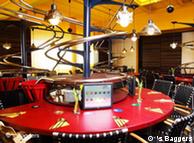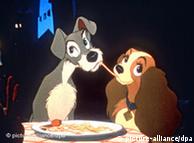Kangaroos Are a Real Treat
By ROBERT SKEFFINGTON
May 2, 2008
Last month's announcement that 400 kangaroos would be culled in Australia's capital, Canberra, attracted considerable international attention. The imagery was too good to ignore. Australia's national emblem, the kangaroo, was to be slaughtered en masse in the home of our parliament, high court and the national art gallery. Surely this was akin to clubbing giant pandas in Beijing or rounding up Bengal tigers in New Delhi.
Australians' connection to our national emblem, however, has always been somewhat more ambivalent than the international perception. Yes, when our yachtsmen won the America's Cup in 1983 they did so under the banner of a boxing kangaroo. And a whole generation of children grew up watching a television show entitled "Skippy" starring an almost omniscient kangaroo that, when it was not communicating with humans, was pulling people out of burning buildings.
![[Kangaroos Are a Real Treat]](http://s.wsj.net/public/resources/images/OB-BJ523_oj_ske_20080501180046.jpg) |
| M.E. Cohen |
But there's a key difference between the 'roo and other countries' animal emblems: There are a lot of 'roos. They are so numerous that if they were not managed they could run amok. As scientists said at the time of the Canberra situation, despite the fact that Australia's kangaroo-management program boasts one of the largest cull programs of a large mammal around the world, there are probably still more kangaroos in Australia than there are people. Tourists go to Thailand to see elephants, but what would happen if these grand animals matched the size of the human population? Having more than 60 million elephants in Thailand wouldn't be pretty.
Killing your country's national emblem is vexing. Even in Australia, the Canberra cull was greeted with dismay by animal-rights groups. But fear not. Australians, being a practical people, have come up with a solution. When the national emblem starts to get out of hand numerically – eat them. No less than Greenpeace has recommended that Australians substitute kangaroo meat for consumption of other red meats to reduce land clearing and the release of methane gas from flatulent cattle and sheep.
Kangaroo meat is a sought-after meal in Australian restaurants and charcuteries. Recipes like kangaroo escalopes with spinach and anchovy butter, kangaroo tail soup, or kangaroo strip loin pan roasted on balsamic mash are not unusual on the menus of fine restaurants.
Australians take kangaroo for granted and are often surprised that it may not be to everyone's taste. Indeed, when Queensland hosted the Commonwealth Heads of Government meeting in 2002, the marinated medallions of kangaroo had to be swiftly removed from the official menu for fear of creating an international incident.
Nor is it just the kangaroo, incidentally. The other animal on our coat of arms, the emu, also appears on our menus. Other unofficial totems are also familiar with the hotplate. The crocodile? Scary for some, but others find it tastes like chicken. Camel? Pass the sauce (preferably hollandaise).
Many other countries are fortunate enough that their national birds and animals are, well, inedible. Estonia has as its emblem the barn swallow, which at 16 grams could hardly be a main course. Americans would be hard pressed to salivate over the bald eagle; they would also have to catch it first, which would be no mean task.
The Britons have the best of both worlds. Not only is the lion an uncommon food, but the United Kingdom does not have a native population of lions. The Canadians are fortunate that their emblem, a maple leaf, although edible, is a plant and therefore does not have a misty-eyed following that protests, writes petitions and passes community-group resolutions. The Chinese dragon is actually mythical, so no controversy can accrue to that whatsoever.
That said, you simply have to draw the line somewhere, and to the best of my knowledge, the koala is not a sought-after dish in Australia. The distaste for koala perhaps is not surprising, as a few years ago even our Tourism Minister John Brown notably described them as "flea-ridden, piddling, stinking, scratching, rotten little things." It is hard to see that as an inviting exhortation to savor koala cuisine.
So, Australians are left with a nonmythical animal, in huge numbers, which can be easily farmed and has a slightly gamey aftertaste. Despite its being on our coat of arms, the answer is clear. Bon appetit.
Mr. Skeffington is a Melbourne-based writer.
See all of today's editorials and op-eds, plus video commentary, on Opinion Journal.
And add your comments to the Opinion Journal forum.


![[Kangaroos Are a Real Treat]](http://s.wsj.net/public/resources/images/OB-BJ523_oj_ske_20080501180046.jpg)